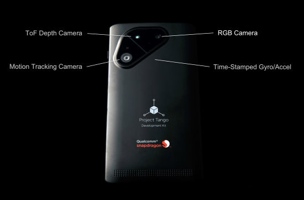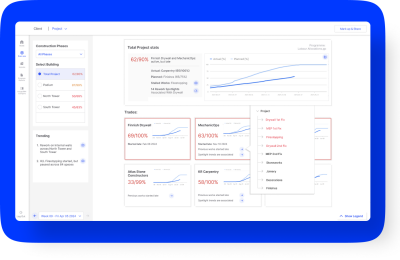Tango for Sale
The announcement of Google’s Project Tango, a consumer-grade 3D mapping tablet, was easily one of our newsletter’s most read stories of all time. Since we posted it more than a year ago, anticipation for Google’s scanning technology has only increased as 3D-scanning professionals and tech-savvy consumers alike wait for an opportunity to get their hands on a precise but inexpensive mapping rig. If that describes you, then today’s your day, because Google is selling an unfinished version of the tablet on their website. It costs a paltry $512 and you don’t need an invite to buy one.
(It’s a funny joke: the tablet used to cost $1028.)
The tablet is still a developer’s kit, which means you shouldn’t expect to find any apps made for it. Google has simply opened the doors up to all developers who can afford $512 (or: all of the developers). Given Google’s stature within the tech industry and the coverage that their I/O conference has been receiving over the past few days, I think it won’t be long before developers are pushing Tango’s 3D sensor hardware and we begin to get a feel for what it can really do.
Will it be the amazing advancement that we all hope for? If history’s any indication, probably not. But it’s certainly a sign of things to come.
Smartphone Version Uses Time of Flight Camera
A few publications in attendance at Google’s I/O developer’s conference are reporting that the company has partnered with Qualcomm to make a new Tango smartphone. If you remember, the original Project Tango device was a smartphone, so just think of this as the new and improved version.
Gizmodo writes that the “secret sauce” in the new Tango smartphone is the time of flight camera, which requires a minimum of space on the back of the phone.
Both the Tango tablet and previous smartphone version used structured light scanning, much like Microsoft’s Kinect. This requires both a projector and a camera to perform 3D measurements, and the devices need to be separated a fair amount to work properly.
Time of flight, on the other hand, uses one device. It shoots out light and measures how long it takes for the light to bounce off an object and come back. That sounds suspiciously like some LiDAR devices…
I haven’t found any more information about Tango, but I’m sure more will be coming in the future and I’ll be sure to cover it right here.
Check out The Verge for some good video of the device in action.






